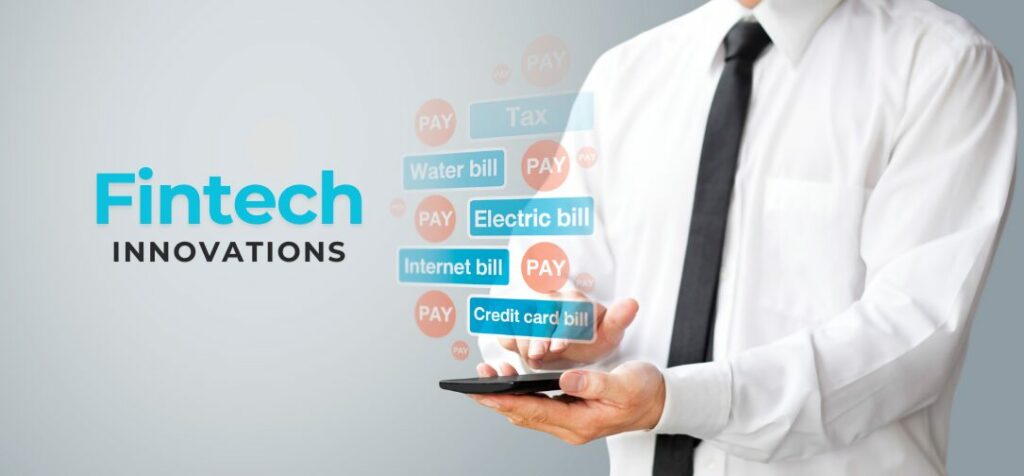The financial technology (fintech) sector is one of the most dynamic and rapidly evolving areas of the tech industry. Through innovations in digital banking, payments, blockchain, and beyond, fintech is fundamentally reshaping the way people and businesses manage money. Here are the top ten fintech innovations that are revolutionizing traditional finance.
Don’t miss! Navigating the World of Fintech: Your Ultimate Guide to Choosing, Using, and Securing Financial Technology
1. Digital Banking: Bringing Banking to Your Fingertips
Digital banking platforms have moved most banking services online, allowing customers to manage accounts, make transfers, and even apply for loans from their smartphones. Banks like Chime and Revolut, along with traditional banks that have adapted digital strategies, make banking faster, more convenient, and accessible to unbanked populations.
Why It’s Transformative: Digital banking reduces reliance on physical branches, streamlines services, and expands financial inclusion by reaching users in remote locations.
2. Mobile Payments: Simplifying Everyday Transactions
Mobile payment platforms, such as Apple Pay, Google Wallet, and PayPal, allow users to make instant payments using their smartphones. From paying for groceries to splitting a dinner bill, mobile payments have transformed daily transactions, making cash nearly obsolete in some places.
Why It’s Transformative: Mobile payments offer convenience, speed, and security, and they’re fueling a cashless society, changing how businesses and consumers think about money.
3. Peer-to-Peer (P2P) Lending: Connecting Borrowers and Investors Directly
Platforms like LendingClub and Prosper have democratized lending by connecting borrowers directly with individual or institutional investors. This peer-to-peer lending model eliminates traditional banks as intermediaries, often resulting in lower interest rates for borrowers and better returns for investors.
Why It’s Transformative: P2P lending makes credit more accessible and cost-effective, benefiting consumers who may struggle to get loans from traditional institutions.
4. Blockchain Technology: Ensuring Transparency and Security in Transactions
Blockchain technology, the backbone of cryptocurrencies, is a decentralized ledger that records transactions securely and transparently. It’s being adopted beyond crypto, influencing areas like supply chain finance, smart contracts, and asset tracking.
Why It’s Transformative: Blockchain offers transparency, immutability, and decentralization, reducing fraud risks and enhancing trust in financial transactions.
5. Cryptocurrency: A New Asset Class
Cryptocurrencies like Bitcoin, Ethereum, and others represent a revolutionary shift from traditional fiat currency. As an asset class, they offer a decentralized, digital alternative that challenges government-issued money and allows for more flexible, borderless transactions.
Why It’s Transformative: Cryptocurrencies provide an alternative store of value, offer investment opportunities, and create potential for new forms of economic interaction.
6. Robo-Advisors: Automated, Affordable Investment Advice
Robo-advisors, like Betterment and Wealthfront, use algorithms to provide financial advice and manage investments automatically. By leveraging AI, these platforms offer low-cost, data-driven investment strategies that were previously accessible only to wealthier individuals.
Why It’s Transformative: Robo-advisors democratize investment management, making it affordable and accessible for a wider audience to build their wealth.
7. Open Banking: Giving Consumers Control Over Their Data
Open banking initiatives allow customers to share their banking data with third-party providers, enabling greater personalization in financial services. This connectivity has spurred new products, such as personalized budgeting apps and aggregated financial dashboards, which improve financial visibility.
Why It’s Transformative: Open banking empowers consumers to control their financial data, encourages innovation, and increases competition among service providers.
8. Insurtech: Modernizing the Insurance Sector
Insurtech companies, like Lemonade and Root Insurance, are reimagining insurance by using AI and big data to streamline claims processing, tailor policies, and enhance customer experiences. This innovation is making insurance more efficient, personalized, and accessible.
Why It’s Transformative: Insurtech drives down costs and increases transparency, transforming insurance into a more consumer-friendly industry.
9. Regtech: Simplifying Compliance for Financial Institutions
Regulatory technology (regtech) platforms help financial institutions comply with complex regulations by automating compliance tasks and providing real-time data analytics. Companies like ComplyAdvantage and Onfido use AI to streamline identity verification and risk management processes.
Why It’s Transformative: Regtech reduces compliance costs and increases accuracy, helping financial institutions avoid regulatory issues and fraud.
10. Buy Now, Pay Later (BNPL) Services: Changing How Consumers Spend
BNPL platforms, such as Klarna and Afterpay, allow consumers to purchase items and pay for them over time without using traditional credit cards. Popular among younger consumers, these services make it easier to finance purchases, often with low or no interest.
Why It’s Transformative: BNPL offers a new credit alternative, appealing to consumers wary of traditional credit cards, and is reshaping consumer spending habits.
Conclusion
Fintech innovations are reshaping the financial landscape by providing more efficient, accessible, and transparent alternatives to traditional financial services. From digital banking to blockchain, these advancements offer consumers and businesses powerful tools to manage finances in new and innovative ways. As fintech continues to evolve, it promises to drive more significant change, making finance more inclusive, data-driven, and customer-centric than ever before.

